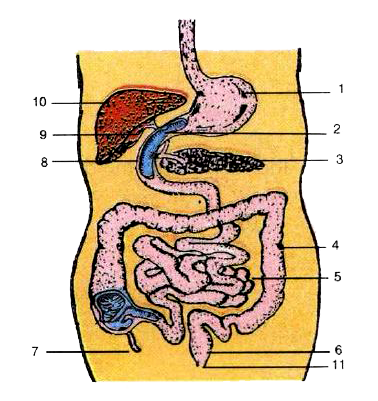Given alongside is an enlarged diagram of a part of the root. Draw arrows on the diagram to show the movement of water passing through different parts.
………………………………. 
Step by step video & image solution for Given alongside is an enlarged diagram of a part of the root. Draw arrows on the diagram to show the movement of water passing through different parts. ………………………………. by Biology experts to help you in doubts & scoring excellent marks in Class 8 exams.
Updated on:21/07/2023Topper's Solved these Questions
- TRANSPORT IN PLANTS BOOK - ICSECHAPTER - TRANSPORT IN PLANTS EXERCISE - Review Questions True or False
6 Videos
- TRANSPORT IN PLANTS BOOK - ICSECHAPTER - TRANSPORT IN PLANTS EXERCISE - Review Questions Fill in the blanks.
5 Videos
- TRANSPORT IN PLANTS BOOK - ICSECHAPTER - TRANSPORT IN PLANTS EXERCISE - Review Questions Long Answer Questions
9 Videos
- THE CIRCULATORY SYSTEMBOOK - ICSECHAPTER - THE CIRCULATORY SYSTEMEXERCISE - REVIEW QUESTIONS ( Long Answer Questions )(Write the answers in your notebook):
16 Videos
Similar Questions
Draw diagrams to show the formation of beats?
View SolutionBy means of a diagram, show the parts of a fruit.
View SolutionThe diagram shows some movement in plants.

What is geotropism?
View Solution
Draw a ray diagram to show the formation of the image as specified in the part a.
View SolutionThe diagram shows some movement in plants.

What are tropic movements?
View SolutionDraw the diagram of a sarcomere of skeletal muscle showing different regions
View SolutionGiven alongside is the diagram of the human alimentary canal.

State the function of the three enzymes found in the juice secreted by part 3.
………………………………………….
…..……………………………………..
………………...................................
View SolutionDraw a simple diagram to show the sedimentation and filtration of water - supply units .
View SolutionDescribe the parts of a fruit. Draw a well labelled diagram showing the different parts of a fruit.
View SolutionDefine geotropism. Draw a labelled diagram of a plant showing geotropic movements of its parts.
View Solution
